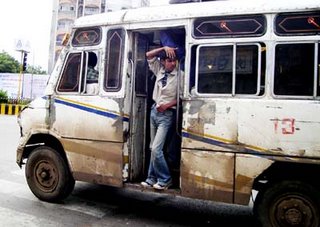 Bhopal usually reminds us Indians of two things. The first, the world's worst industrial disaster - the deadly cloud of methyl isocyanate that engulfed the sleeping city on the midnight of December 2-3, 1984. Between 16,000 to 30,000 people were killed and 500,000 injured. The second is a character from a movie a almost a decade older than the disaster - Soorma Bhopali from Sholay. Most Bhopalis are unlike the character played by Jagdeep, but a few are. You still get to hear the typical Bhopali tone in the older parts of the city. Bhopal and Indore are said to the Delhi and Bombay of Madhya Pradesh. Bhopal is the administrative capital, while Indore is more businessy.
Bhopal usually reminds us Indians of two things. The first, the world's worst industrial disaster - the deadly cloud of methyl isocyanate that engulfed the sleeping city on the midnight of December 2-3, 1984. Between 16,000 to 30,000 people were killed and 500,000 injured. The second is a character from a movie a almost a decade older than the disaster - Soorma Bhopali from Sholay. Most Bhopalis are unlike the character played by Jagdeep, but a few are. You still get to hear the typical Bhopali tone in the older parts of the city. Bhopal and Indore are said to the Delhi and Bombay of Madhya Pradesh. Bhopal is the administrative capital, while Indore is more businessy.
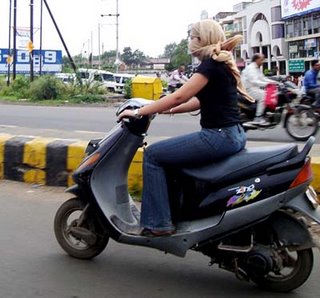 Its been three years since my last visit, and on stepping out of the Bhopal Express (not the movie but India's first ISO-9002 certified train), I felt that the city hadn't changed much except for the expected addition of a few shopping complexes. But the Delhi comparison seems limited only to the broad avenues, the division between the old and the new cities, and the political activity. Bhopal hardly has any traffic jams (at least in the newer parts), the weather was much cooler with the consistent cloud cover (residents say it has been that way for the last two months) and yes, young girls zipping past care freely on two-wheelers. Some with their faces covered, what I initially thought to be a modification of the burqa, but later learnt that it was an effective sunscreen. They even wear gloves that cover almost the entire length of the arm.
Its been three years since my last visit, and on stepping out of the Bhopal Express (not the movie but India's first ISO-9002 certified train), I felt that the city hadn't changed much except for the expected addition of a few shopping complexes. But the Delhi comparison seems limited only to the broad avenues, the division between the old and the new cities, and the political activity. Bhopal hardly has any traffic jams (at least in the newer parts), the weather was much cooler with the consistent cloud cover (residents say it has been that way for the last two months) and yes, young girls zipping past care freely on two-wheelers. Some with their faces covered, what I initially thought to be a modification of the burqa, but later learnt that it was an effective sunscreen. They even wear gloves that cover almost the entire length of the arm.
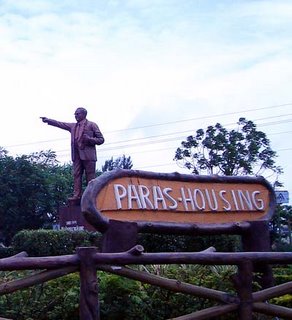 Almost every crossing Bhopal has a bust or a statue of individuals of historic importance. In Delhi they seem to be more concentrated around the Parliament building. This activity is also bustling in other smaller towns and cities. Maybe this has a close conection with the idolatrous religion that most in the country practice.
Almost every crossing Bhopal has a bust or a statue of individuals of historic importance. In Delhi they seem to be more concentrated around the Parliament building. This activity is also bustling in other smaller towns and cities. Maybe this has a close conection with the idolatrous religion that most in the country practice.
Once, the guys at Times Response in Bhopal, asked me to compile and edit a Bhopal City Guide, and with that money I had bought my first mobile phone, from Yusuf Sarai, New Delhi. This is how I had described the city:
Indolent, voluptuous, mischievous and always surprising - this is Bhopal. A marvellous amalgam of history, scenic beauty and modernisation. The cliche - City of Lakes has stuck to its name. And why not. two of these at its heart provide the very lifeblood to the city. Its sublime mosques, magnificent palaces and gardens have earned for it the title of The Baghdad of India, and histiry has bestowed upon it the name - The City of Begums. Bhopal has a multifaceted profile, maintaining much of its old world charm in today's split second world, a harmonic symphony of the pristine and the present. The place pulsates with the Bhopali Spirit, something that makes Bhopalites go against all odds. Love it or hate it, but the City of Raja Bhoj never fails to entice you. Step into its magical realm.
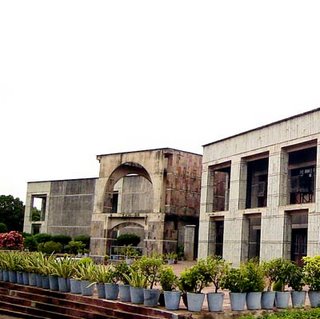
Bhopal is fast developing into an educational hub, housing some unique institutions in the country, one is the
Indian Institute of Forest Management appropriately located in a campus atop a hill and dense vegetation all around. Another beauty is the
National Law Institute University, the view from atop the modernistically designed library and computer centre is accentuated by the lake formed by the Kerwa Dam. The calm in the campus is far away from the hustle and bustle of our courts. Another is the
National University of Journalism and Communication named after renowned poet and freedom fighter Makhanlal Chaturvedi. It is said to be Asia's only university of journalism. But still has some way to go before being counted amongst the best of J-schools. Besides there is also the
Maulana Azad National Institute of Technology and the Institute of Hotel Management.
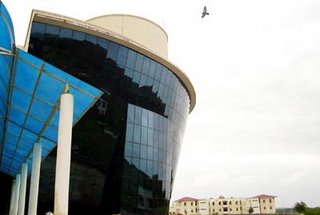
I occasionally wanted to be a teacher and that want was partially fulfilled thanks to a faculty at the Centre for Studies in Mass Communication, who asked me to enlighten his students on - blogging. And obviously I was more than interested. And my students, they also seemed to be pretty captivated (bad bloggers can make good teachers). After all that's the least one can do for one's alma mater. If the number of Indian bloggers sees a sudden spurt, you know who is responsible.
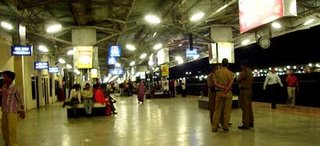
Habibganj Railway Station in New Bhopal is one of the better maintained railway stations in the country. I still remember the days, when we didn't have much to do or had some studying to do, the serene platform no. 1 was the best place to be. Our laziness or concentration only occasionally broken by the whistle of a passing train. The station is also disabled and wheeled luggage friendly - it doesn't have stairs, only an incline to the over bridge. When I disembarked at Delhi's Hazrat Nizamuddin this morning with a splitting headache and a running nose thanks to the air-conditioning vents working overzealously over my berth, and had to lug my baggage over and down the stairs, I knew what a bliss that incline at Habibganj was. I also forgot to get the soorma that I had promised to bring for a friend.
Click here for the complete post...
Collapse this post
 This service has been on for quite a while in Delhi but seems that not too many people are aware of this.
This service has been on for quite a while in Delhi but seems that not too many people are aware of this.















 "How long will it take you to reach here?" If you are not a frequent traveller on the route, this is usually difficult answer the question.
"How long will it take you to reach here?" If you are not a frequent traveller on the route, this is usually difficult answer the question. The last ad of this series was released in April 2007 - the very catchy and wonderfully executed
The last ad of this series was released in April 2007 - the very catchy and wonderfully executed 









































































